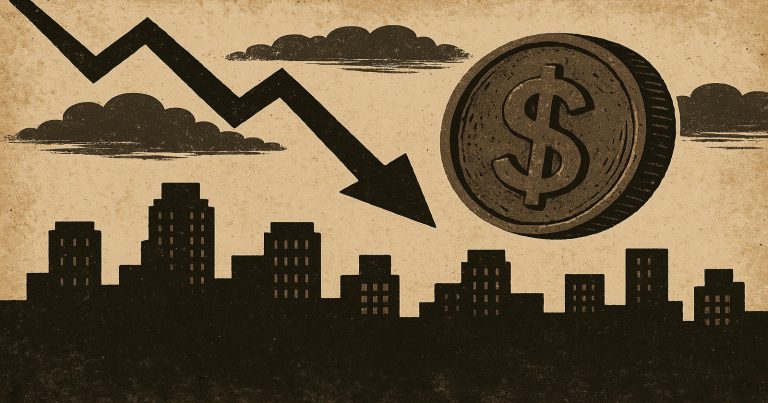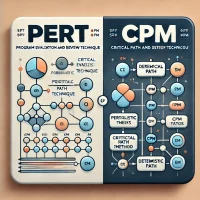The Great Depression remains one of the worst experiences in the history of mankind in terms of economic events, impacting the world’s economy between 1929 and the late 1930s. The era was characterized by a number of economic downturns, such as the 1929 stock market crash, banking panics in 1930 and 1931. and the Smoot-Hawley Tariff that collapsed world trade. Various events and policies contributed to the extension of the Depression throughout the 1930s. Economists and historians frequently refer to the Great Depression as the most important, if not the most devastating, economic event of the 20th century.This essay explores the causes, its impact, and the fundamental steps that were taken to ensure recovery to explain this historic event in more detail.
What Was the Great Depression of 1929?
The Great Depression started in 1929 and is best described by the deep plunge in production, massive joblessness, and the highest financial meltdown across several economies. This period was the time when economies all over the world faced dwindling consumer demand, falling prices, and insecurity about the future. Starting with a stock market crash in 1929, its spillover spread all over the world, ravaging the communities and drastically changing the foundations of economics and policies.
Speculative investment was very widespread during this period before the Depression, especially in the U.S. stock market, as it was witnessing high growth. Financial instability soon overran the banking system when the market bubble finally burst in October 1929. Near-collapse is the term best suited for describing the world economic situation, which, along with high unemployment and reduced industrial output, compelled governments and economists to change their economic practices. They eventually resulted in structural reforms to prevent such crises from occurring in the future.
Explain the Causes of Great Depression
The underlying reason for the Great Depression in America was a reduction in expenditures (often called aggregate demand), which caused production to fall as manufacturers and retailers saw an unintended build-up in inventories. The US fall affected the remainder of the world through the gold standard to a large extent. Various other factors, though, affected the fall in most countries.
1. Stock Market Crash of 1929
The stock market collapse of October 1929 has been termed “Black Tuesday.” Overconfidence and speculative investments inflated the stock market. And when the value of this paper collapsed, billions were lost overnight, destroying years of wealth and confidence in the financial sector.
2. Bank Failures
The banks suffered such losses after the stock market crash that they hardly had a chance to recover. The panicking public then led to heavy withdrawals in most of its banks and resulted in many bank failures. Loans became scarce with fewer banks functioning, and this contributed to reduced economic growth, thus worsening the economic depression.
3. Reduction in Consumer Spending
And the overall unemployment rates soaring, along with falling incomes, resulted in drastic consumer spending cuts. Such reduced spending in turn led to severe falls in industrial production, which led to further job losses as the cycle fed upon itself.
4. Reduction in International Trade
The 1930 Smoot-Hawley Tariff Act raised duties on imports to the United States to protect American industries. Other countries retaliated by raising their tariffs also, thereby reducing international trade. Protectionism led to further contraction of the economy and deepened the economic crisis globally.
5. Drought Conditions and Agricultural Collapse
Besides financial factors, environmental factors also accelerated the Depression. Drought and improper agricultural practices created the “Dust Bowl” in the United States, where vast areas of farmlands were destroyed and thousands of farmers were displaced as they became unable to pay loans. This further aggravated the banking crisis and the overall economic situation.
Great Depression Years
The Great Depression, a disastrous global economic depression, started in 1929 and ended in the late 1930s. It was the 20th century’s longest, deepest, and most pervasive depression. The following is a quick chronology of principal events:
- 1929: The stock market crash in October, also referred to as Black Tuesday, is the start of the Great Depression.
- 1930: The Smoot-Hawley Tariff Act is passed in June, increasing U.S. tariffs on more than 20,000 imported items. This act worsens the worldwide economic downturn as foreign trade collapses.
- 1931: Banks start to collapse in large quantities, and joblessness increases sharply. This year also sees the onset of a devastating drought in the American Midwest, subsequently referred to as the Dust Bowl, further deteriorating the economy.
- 1932: Rock bottom of the Depression, when close to 25% of America’s labor force is jobless. Economic activity falls heavily, extending the crisis.
- 1933: Franklin Roosevelt elected President in March and shortly after legislates the New Deal—an assortment of programs, public work initiatives, banking reform, and controls.
- 1935: Institution of social welfare measures such as the Social Security Act, aimed at covering the poor, elderly, and unemployed.
- 1939: The outbreak of World War II assists in stimulating economic activity and jobs, bringing the Great Depression to a close for much of the world.
The decade was characterized by extreme distress but also served to provoke strong regulatory changes and new economic thinking that guided policymaking.
How Did the Great Depression End?
The end of the Great Depression did not surface from a single solution. Instead, it was due to government interventions, reform in the economy, and eventually the outbreak of the Second World War. Presented below are the key points that contributed to the closing of this economic depression period.
The New Deal
The New Deal, initiated by President Franklin D. Roosevelt, was a package of programs, work projects, and reforms aimed at rejuvenating the US economy. Relief of unemployment remained the highest objective, followed by reform in the financial sector and granting economic growth. Programs, like the CCC (Civilian Conservation Corps), provided employment jobs, sparked consumer spending, and gave the country much hope then with the establishment of the Public Works Administration. The Social Security Act created the welfare safety net, but reforms in banking and securities helped restore confidence in the financial system.
Monetary Reforms and Increased Government Spending
Another crucial aspect of the New Deal was monetary reforms designed to stabilize currency. By introducing the FDIC, bank failures no longer evoked public distrust, hence stabilizing the banks progressively. Government spending rose on that account, offering critical momentum to private sector investments as well as consumer spending.
The Role of World War II
World War II finally ended the Great Depression with a huge boost in industrial output and employment. Wartime demand for military supplies spurred production to levels of near-full employment. When the excess capacity was captured at nearly all factories, the war produced an unprecedented record of economic activity, pulling most economies out of the Depression.
The Great Depression is one of the most significant economic events in history, transforming economic policies and ideologies across the globe. It revealed the necessity of government intervention, which has shaped economic systems and paved the way for modern economic practices and safety nets. The aftermath of the Depression called for massive reforms to ensure that such a crisis would never be repeated and paved the way for strong financial regulations that continue to influence global economic policies.
Great Depression FAQs
Write any four results of the great depression.
The Great Depression led to extensive unemployment, multiple bank failures, the establishment of large-scale government policies such as the New Deal, and a severe decline in international trade. These incidents brought about a change in economic theory and policies with greater protectionism and government interference in economies.
What caused in the Great Depression?
The main causes include the stock market crash of 1929, widespread bank failures, reduced consumer spending, declining international trade, and environmental issues such as the Dust Bowl.
How did people survive the depression?
Many families strived for self-sufficiency by keeping small kitchen gardens with vegetables and herbs. Some towns and cities allowed for the conversion of vacant lots into community “thrift gardens” where residents could grow food.
How long did the Great Depression last?
The Great Depression dates from 1929 to the early 1940s, with most economies beginning to recover in the late 1930s.
What role did the New Deal play in ending the Great Depression?
The New Deal provided jobs, initiated social welfare programs, and implemented financial reforms to restore confidence in the economy and create a foundation for recovery.
Did World War II help to end the Great Depression?
Yes, World War II created an economic boom due to the demand for military production, which led to full employment and increased industrial activity, effectively ending the Depression in many countries.
How did the Great Depression impact global trade?
Global trade suffered significantly during the Great Depression due to protectionist tariffs like the Smoot-Hawley Tariff, which led to retaliation and a drop in international trade volumes.


